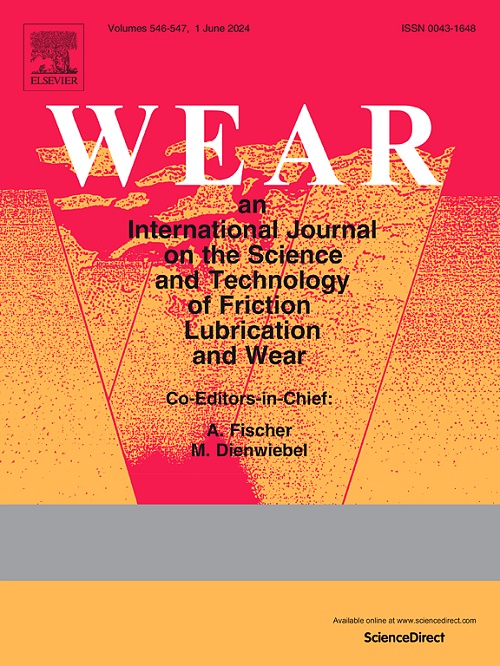Wear mechanisms of superhard cutting tools in machining of SiCp/Al composites
IF 5.3
1区 工程技术
Q1 ENGINEERING, MECHANICAL
引用次数: 0
Abstract
Silicon carbide particle-reinforced aluminum matrix composite (SiCp/Al) has been widely utilized in aerospace, rail transportation, and electronic components, owing to its high-performance properties such as high specific strength and stiffness, wear and fatigue resistance, good thermal stability, simple manufacturing process, and adjustable properties. However, its exceptional performance presents challenges to the material removal process as it leads to rapid tool wear, high and fluctuating cutting forces, affecting the processing efficiency and quality. The present study focuses on investigating the tool wear mechanism and failure process in the side milling of SiCp/Al composite materials with polycrystalline cubic boron nitride (PCBN) and polycrystalline diamond (PCD) cutting tools. The results indicate that the wear characteristics of PCBN cutter flank face are blunt tip and rapid expansion of large wear area, whereas PCD cutter wear primarily manifests as minor chipping at the tip and gradual wear on the flank face. The cutting force of PCBN cutter is significantly higher than that of PCD cutter, exhibiting an average increase of 38.1 %. The PCBN cutter undergoes gradual and continuous material loss during the machining process, resulting in erosion and dulling of the cutting edge. In contrast, PCD cutter exhibits higher resistance to erosion and retains its sharp cutting edge even during normal wear conditions. The rake face of a PCBN cutter exhibits characteristics of build-up edge and scratches, with abrasive wear, adhesive wear, and possible diffusion wear. The tip of the PCD cutter displays a distinct serrated cutting edge, with minor scratches on the flank face and chip adhesion observed on the rake face. Here, the primary modes include adhesive wear, brittle fracture, and slight abrasive wear. These findings are expected to serve as valuable references for the efficient and high-quality machining of SiCp/Al materials.
求助全文
约1分钟内获得全文
求助全文
来源期刊

Wear
工程技术-材料科学:综合
CiteScore
8.80
自引率
8.00%
发文量
280
审稿时长
47 days
期刊介绍:
Wear journal is dedicated to the advancement of basic and applied knowledge concerning the nature of wear of materials. Broadly, topics of interest range from development of fundamental understanding of the mechanisms of wear to innovative solutions to practical engineering problems. Authors of experimental studies are expected to comment on the repeatability of the data, and whenever possible, conduct multiple measurements under similar testing conditions. Further, Wear embraces the highest standards of professional ethics, and the detection of matching content, either in written or graphical form, from other publications by the current authors or by others, may result in rejection.
 求助内容:
求助内容: 应助结果提醒方式:
应助结果提醒方式:


